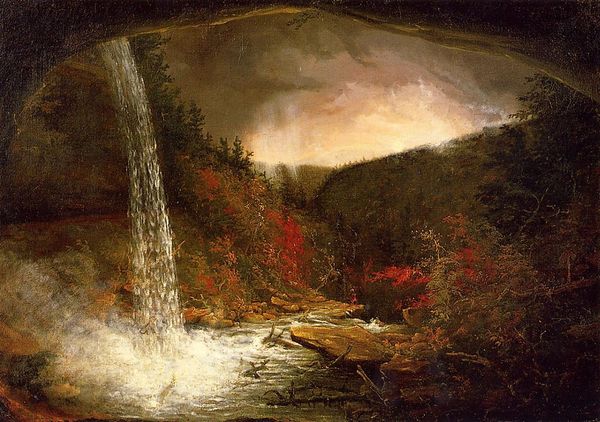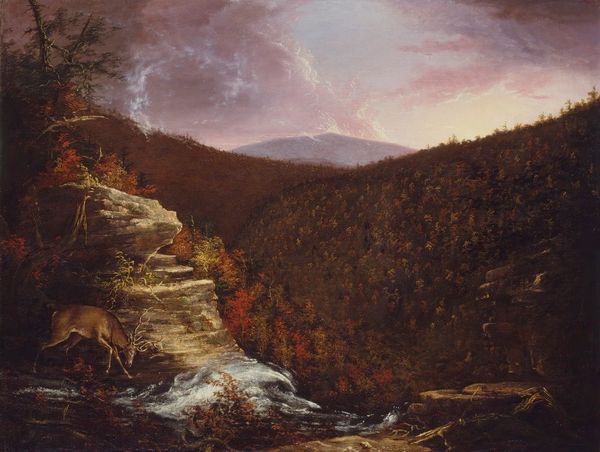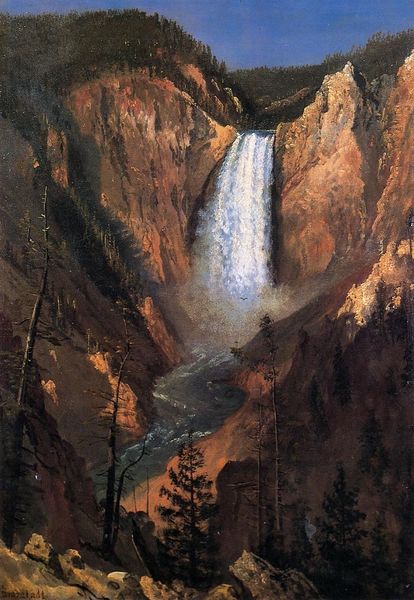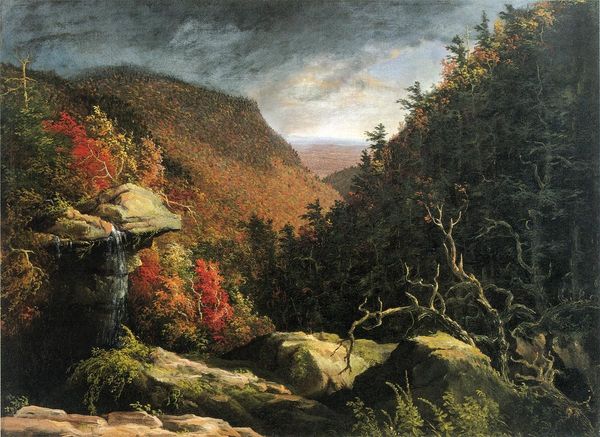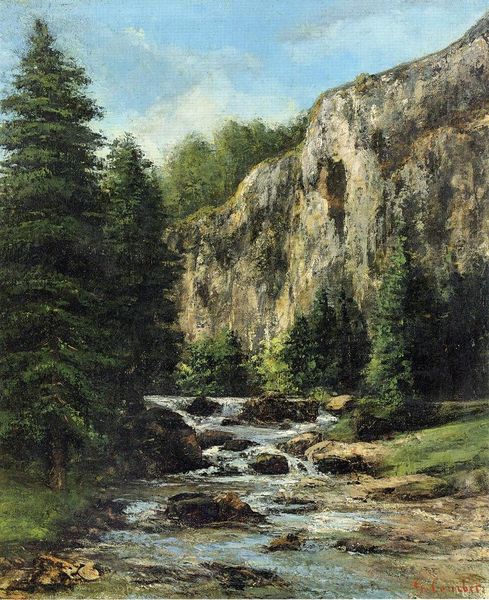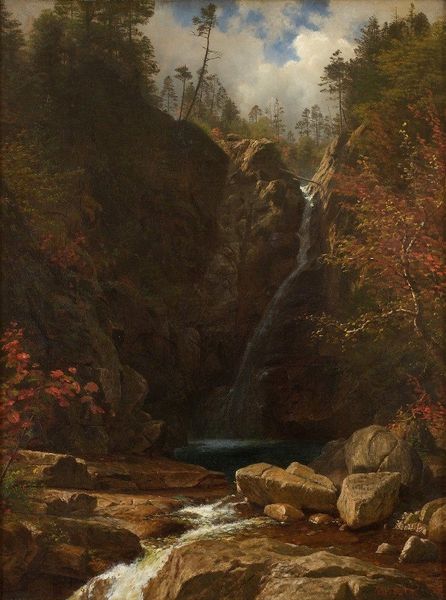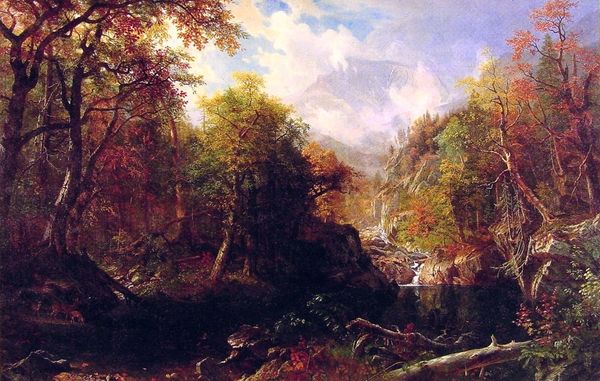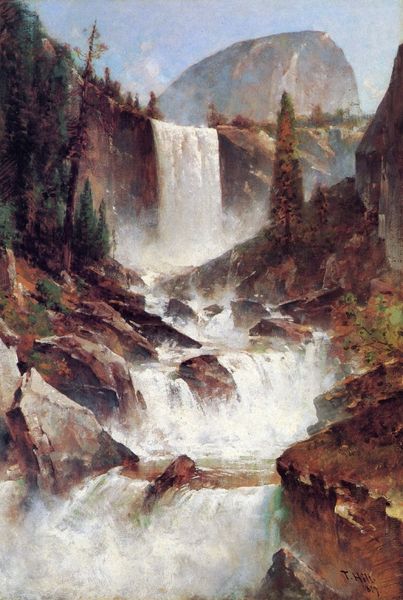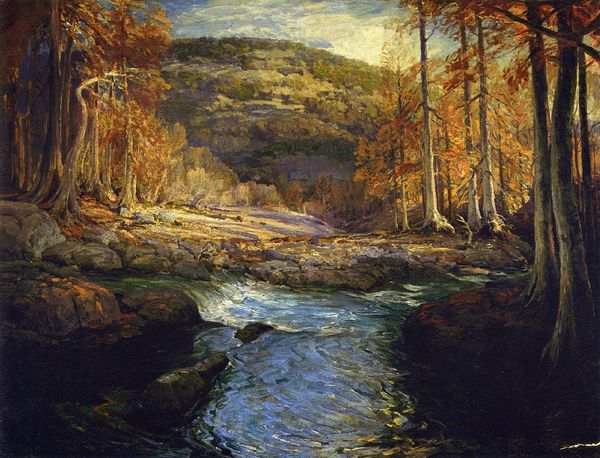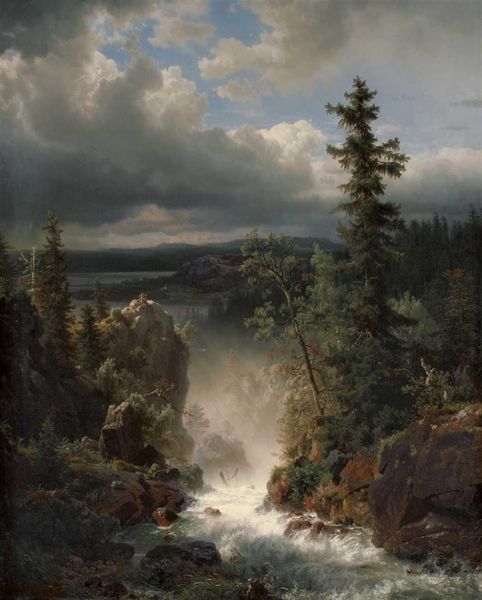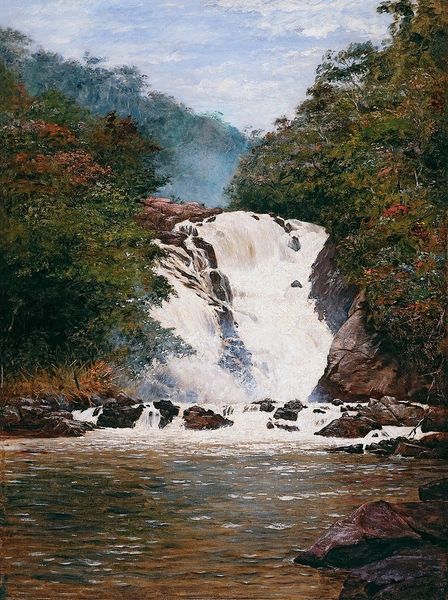
oil-paint, watercolor
#
tree
#
sky
#
oil-paint
#
landscape
#
waterfall
#
river
#
watercolor
#
forest
#
romanticism
#
hudson-river-school
#
water
Dimensions: 109 x 92 cm
Copyright: Public domain
Editor: Here we have Thomas Cole’s "Falls of the Kaaterskill," created in 1826 using oil paint and possibly some watercolor. The scene is powerful and brooding, almost theatrical with its dramatic lighting. What strikes you most when you look at this painting? Curator: The theatricality you mention is key. Cole isn’t simply depicting a waterfall; he's constructing a visual drama. Notice the solitary figure positioned precariously above the falls. What does that tiny human figure suggest to you against the sublime scale of nature? Editor: It emphasizes the insignificance of humanity, maybe even vulnerability. Curator: Precisely! The symbol of "Man" dwarfed by nature evokes the Romantic era’s focus on the power of the natural world but look at the broken tree on the right. Cole frequently used broken or decaying trees. What emotional associations might this carry, considering his broader focus on the American landscape? Editor: I guess a feeling of ruin? Loss? Curator: Possibly, reflecting anxieties about westward expansion and industrialization disrupting a perceived pastoral ideal, especially considering this was painted so early in the Hudson River School movement. We have this symbol contrasting nature’s permanence against inevitable decline. Editor: So it is less about the realistic waterfall, and more about what the components communicate collectively. It also changes my sense of that theatrical light. Curator: Exactly. It illuminates this complex interplay of humanity, nature, and time. Each element builds the overall symbolism. Editor: This piece shows there's always a deeper cultural story embedded within landscape paintings. Curator: Indeed. We have seen nature become cultural commentary.
Comments
No comments
Be the first to comment and join the conversation on the ultimate creative platform.
